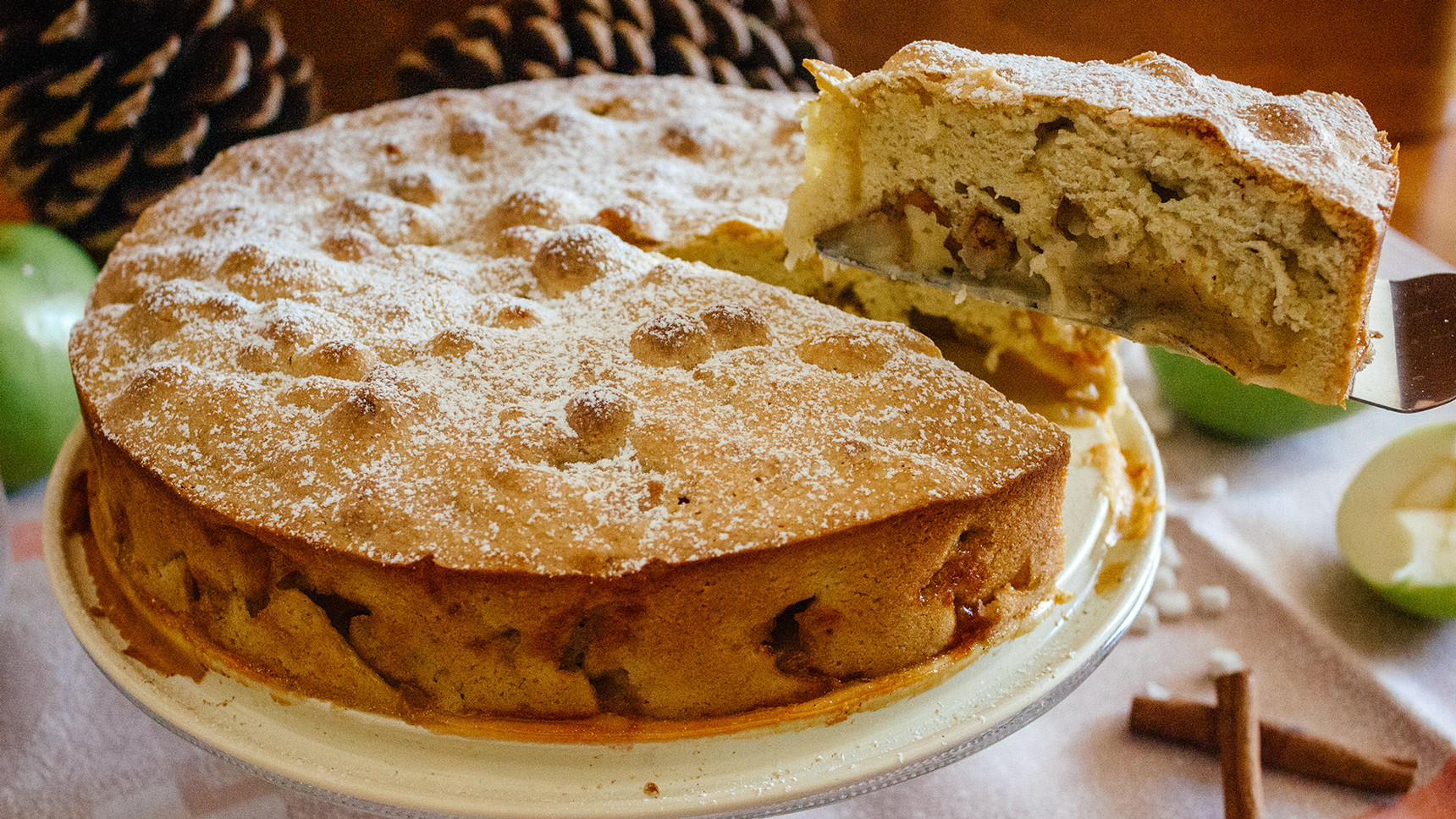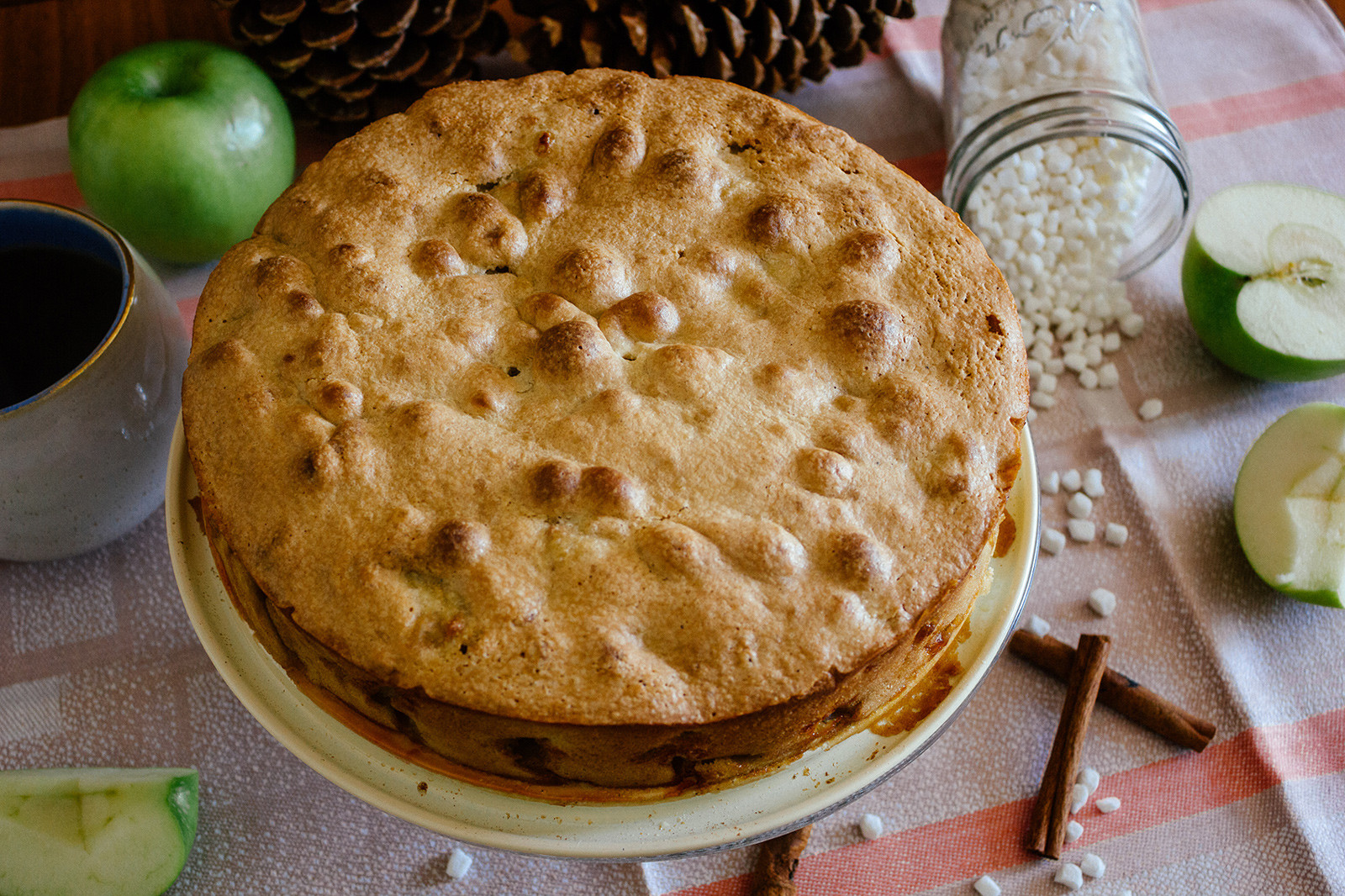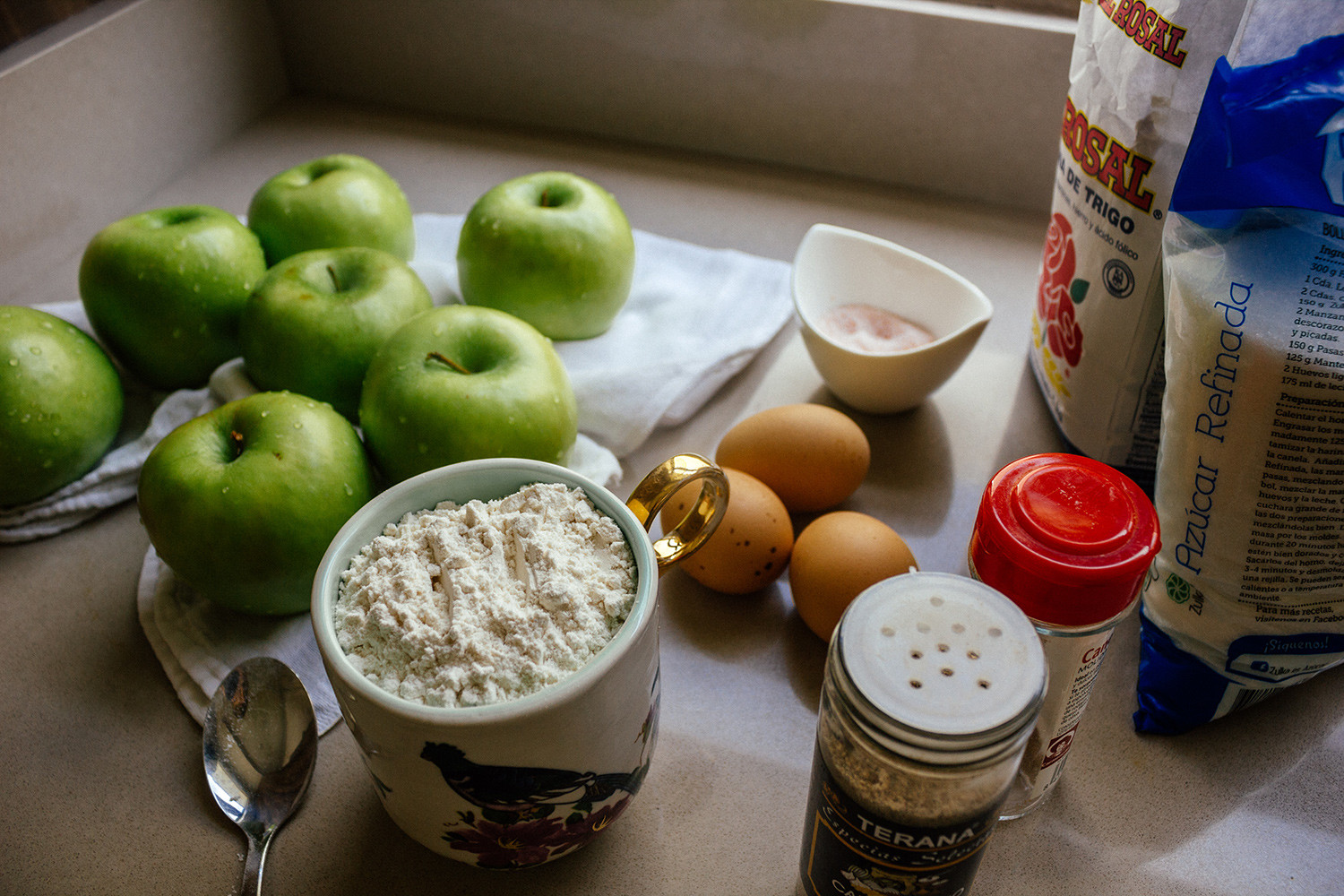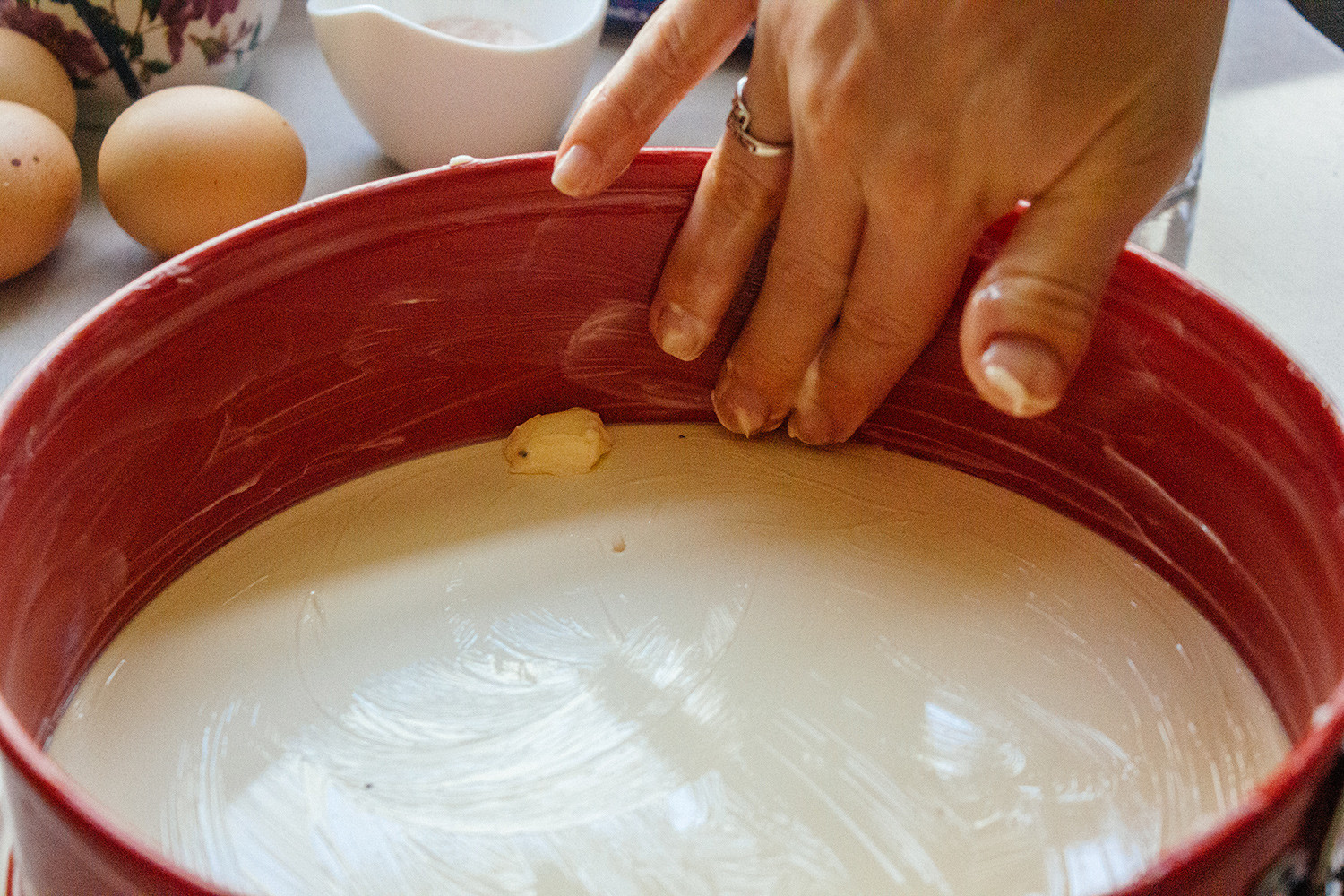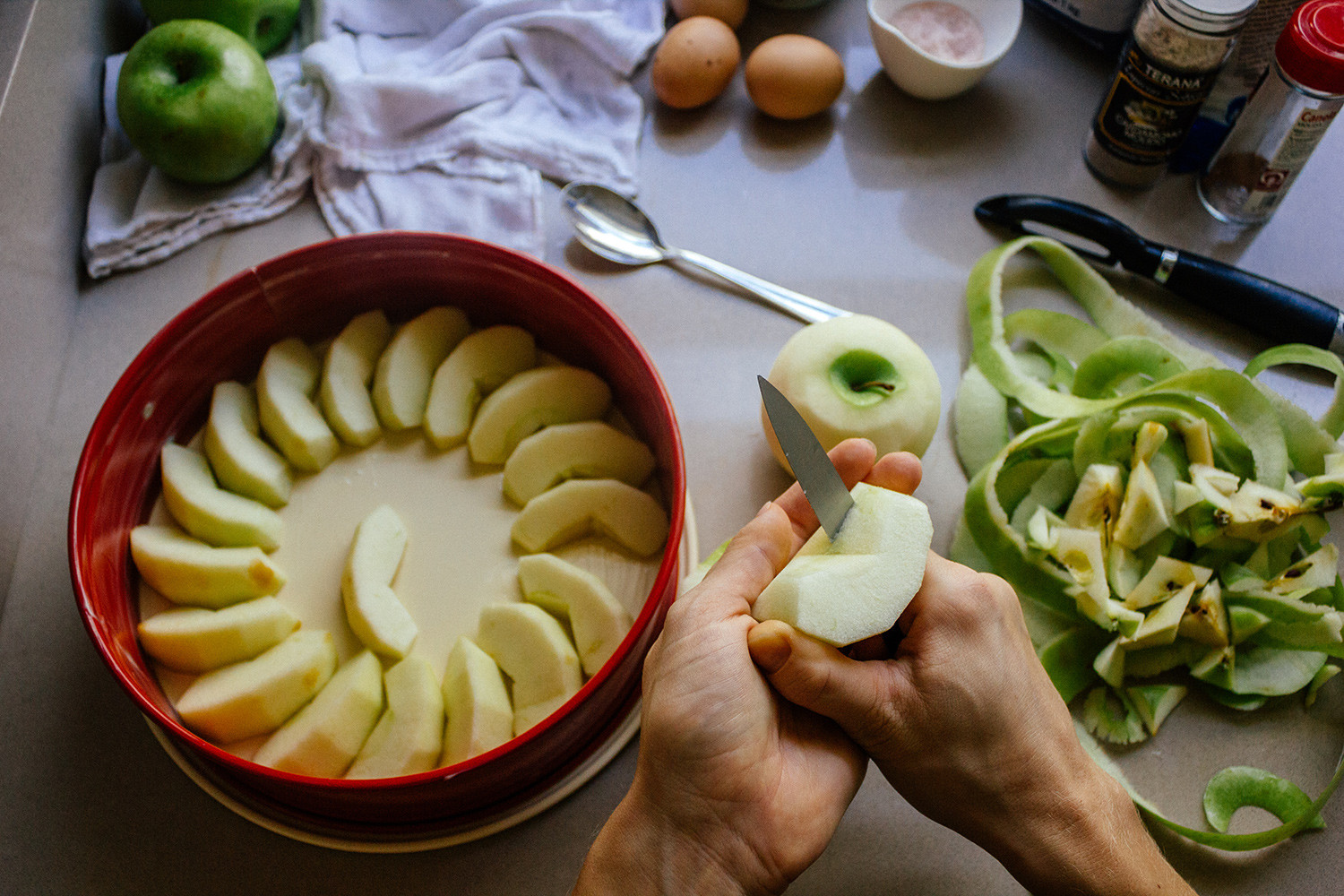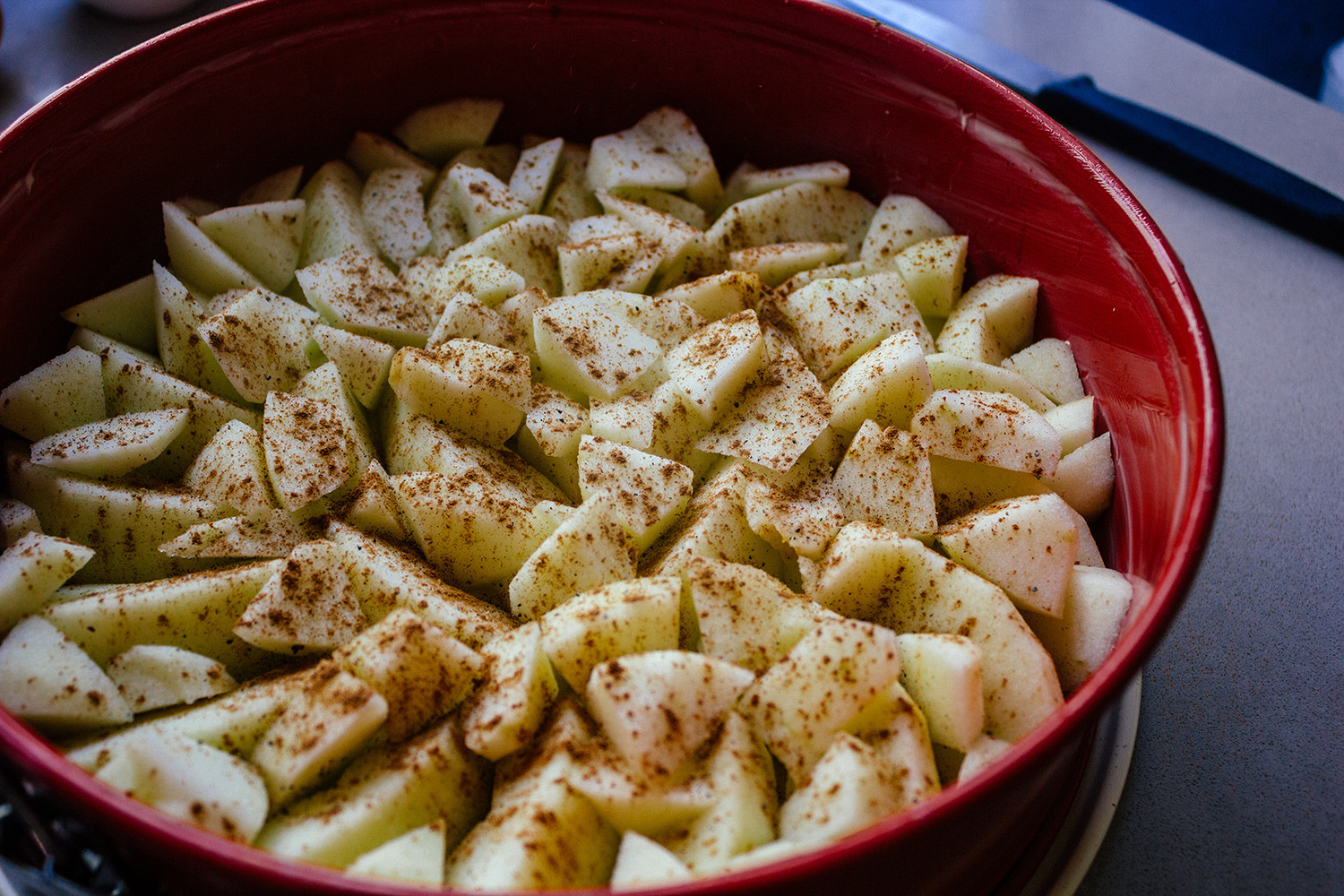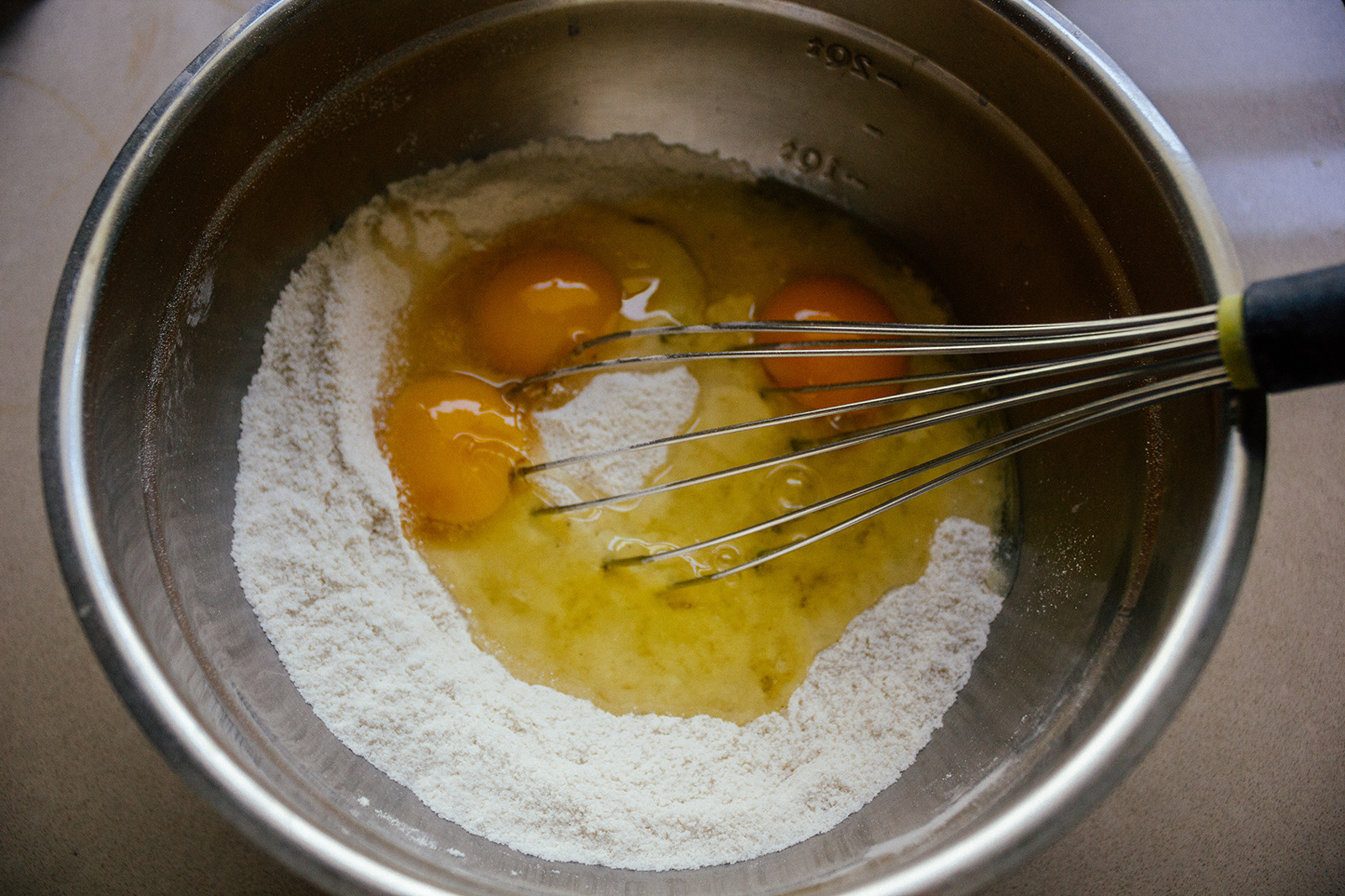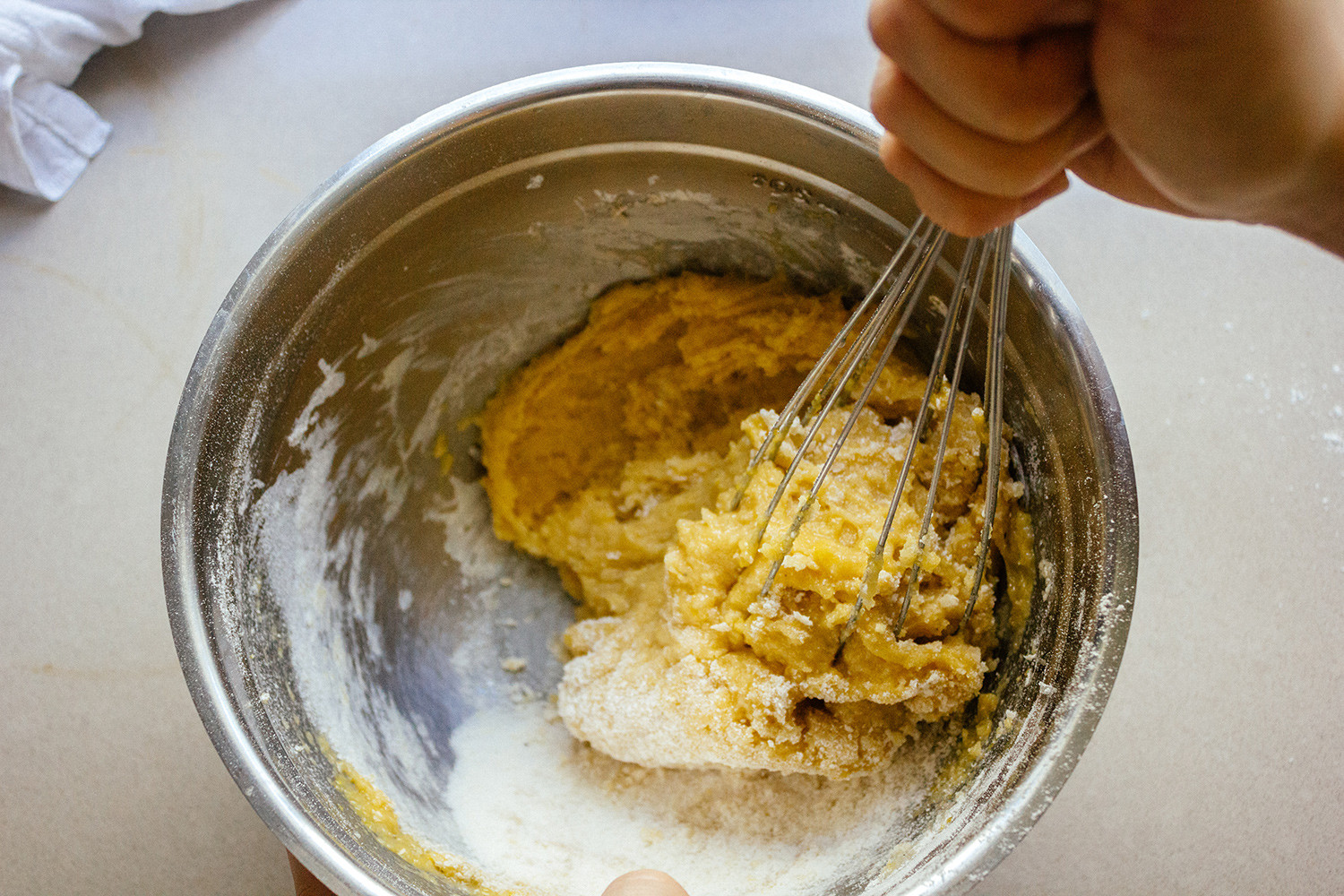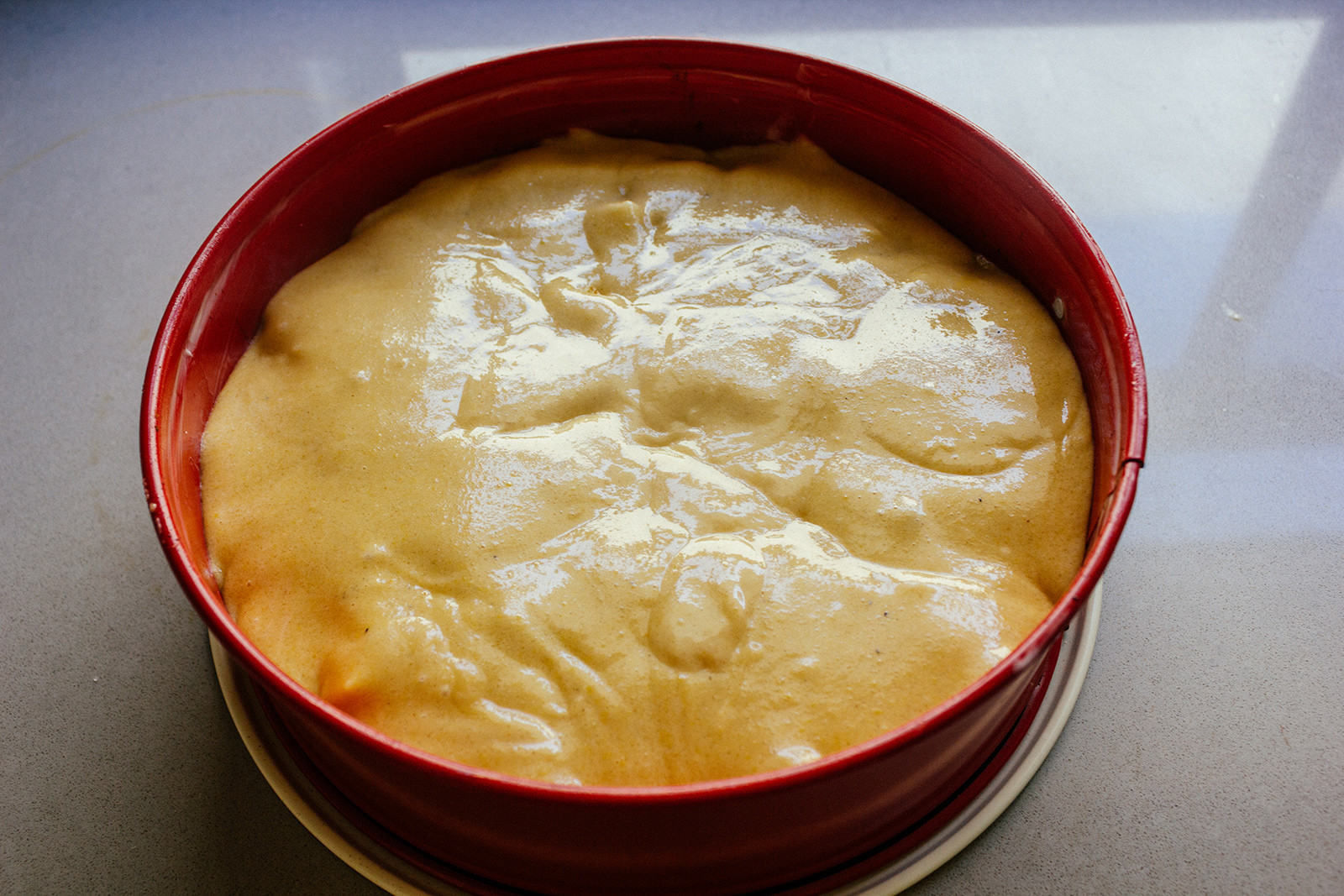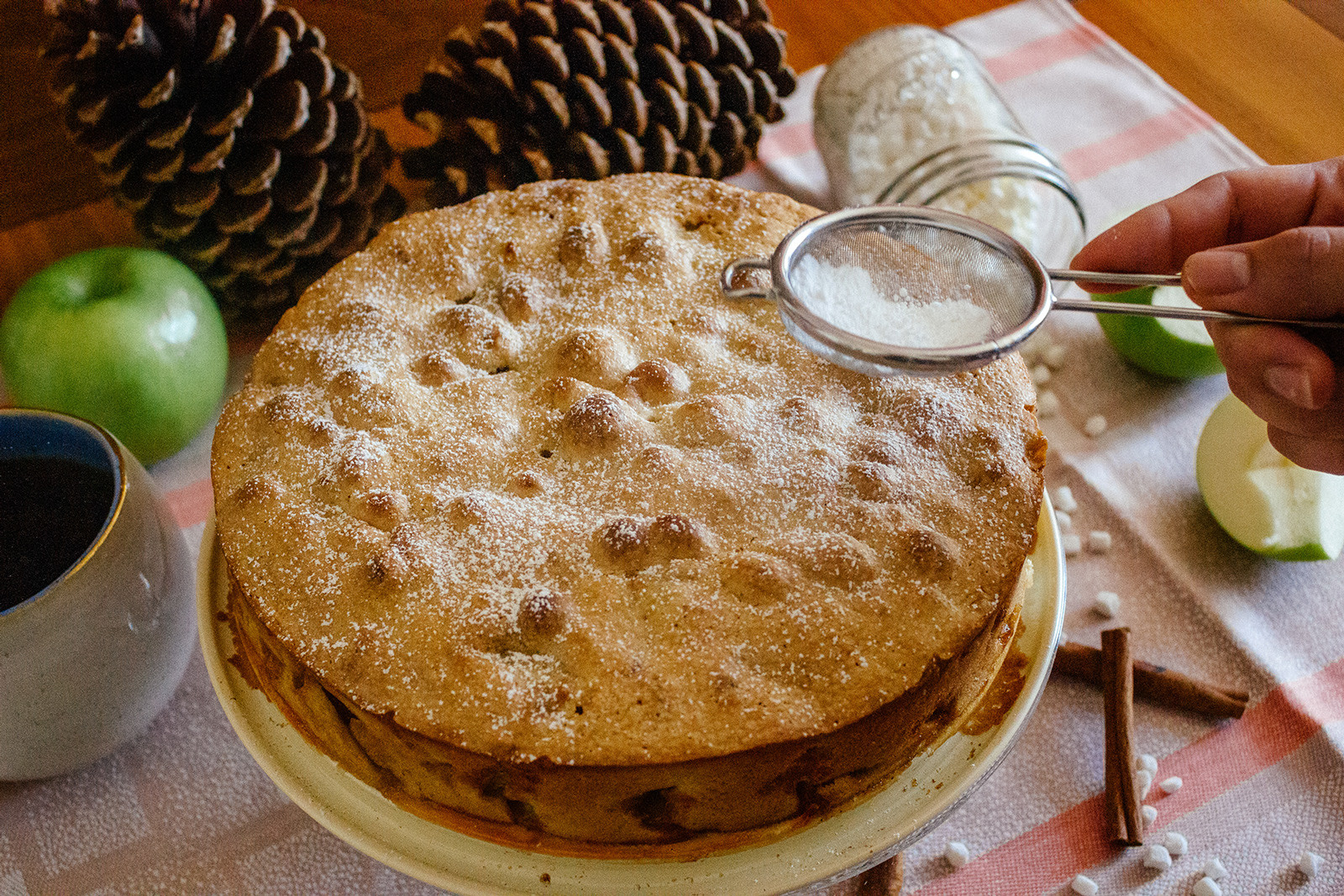Учебник Spotlight 6. Student’s Book. Страница 86
Module 9а. Food and Drink — Еда и питье
1. a) Listen and repeat. Which of these items are fruit/meat/vegetables/ drinks/dairy products? Which of them are similar in your language? — Прослушай и повтори. Какие из этих предметов фрукты/мясо/овощи/напитки/ молочные продукты?
- fruit: apples, bananas — фрукты: яблоки, бананы
- meat: meat — мясо: мясо
- vegetables: carrots, potatoes, onions, tomatoes — овощи: морковь, картошка, лук, помидоры
- drinks: water, juice, milk, coffee — напитки: вода, сок, молоко, кофе
- dairy products: milk, cheese, yoghurt, ice-cream — молочные продукты: молоко, сыр, йогурт, мороженое
Комментарий: В указанные категории не входят eggs (яйца), bread (хлеб), pepper (перец), salt (соль), olive oil (оливковое масло), fish (рыба), honey (мед), cake (торт), biscuit (печенье), rice (рис), sugar (сахар)
b) Choose items from the picture and act out exchanges in pairs as in the example. — Выберите продукты с картинок и разыграйте диалоги в парах, как в примере
- A: Do you like fish? — Тебе нравится рыба?
- B: Yes, it’s delicious. /No, it’s horrible. — Да, она вкусная/ Нет, она ужасная.
- A: Do you like apples? — Тебе нравятся яблоки?
- B: Yes, they’re tasty. I also like oranges and bananas. Do you like fruits? — Да, они вкусные. Мне также нравятся апельсины и бананы. А тебе нравятся фрукты?
- A: No, I prefer meat, cheese, milk and yoghurt. Do you like yoghurt? — Нет, я предпочитаю мясо, сыр, молоко и йогурт. Тебе нравится йогурт?
- B: Yes, I do. Especially I like yoghurt with fruit pieces. — Да. Особенно я люблю йогурт с кусочками фруктов.
- A: Oh, yeah. You’ll never see yoghurt with meat pieces. Such a pity. — О да. Ты никогда не встретишь йогурт с кусочками мяса. А жаль.
2. Which of the words in Ex. 1 are: countable (we can count them)? uncountable (we can’t count them)? — Какие из слов в упр. 1: исчисляемые? неисчисляемые?
- milk — молоко —uncountable
- eggs — яйца —countable
- juice — сок —uncountable
- yoghurt — йогурт —uncountable
- water — вода —uncountable
- cheese — сыр — uncountable
- bread — хлеб —uncountable
- pepper — перец —uncountable
- salt — соль —uncountable
- olive oil — оливковое масло —uncountable
- meat — мясо —uncountable
- fish — рыба —uncountable
- potatoes — картофель —countable
- apples — яблоки —countable
- bananas — бананы —countable
- ice-cream — мороженое —uncountable
- honey — мёд —uncountable
- cake — торт —uncountable
- biscuit — печенье —countable
- tomatoes — помидоры —countable
- carrots — морковь —countable
- onions — лук —countable
- rice — рис —uncountable
- coffee — кофе —uncountable
- sugar — сахар —uncountable
Примечание: Давайте разберем, какие существительные могут считаться неисчисляемыми, а какие — исчисляемыми. Из самого названия понятно, что то, что можно посчитать (в штуках), является исчисляемым предметом. Различные жидкости, массы, сыпучие предметы нельзя посчитать в штуках (для этого используются другие меры веса и объема), если только у них нет индивидуальной упаковки.
Приведем примеры. Yoghurt — йогурт — является неисчисляемым предметом, а если мы говорим об индивидуальной упаковке, тогда йогурт становится исчисляемым. Сравните: вода (неисчисляемое) — бутылка воды (исчисляемое), торт (неисчисляемое) — кусочек торта (исчисляемое), хлеб (неисчисляемое) — буханка хлеба (исчисляемое) и т.д. Есть еще такие сложные слова как potatoes (картофель) — во множественном числе это слово исчисляемое, поскольку подразумевается несколько картофелин. А в единственном (potato) оно может быть как исчисляемым (одна картофелина), так и неисчисляемым, когда мы говорим о ней, как о еде (блюде).
3. a) Read the examples and the rules. — Прочитай примеры и правила
- To make this dish you need some tomatoes, an egg and some olive oil. — Чтобы приготовить это блюдо, тебе нужны несколько помидоров, яйцо и немного оливкового масла.
- We need to go to the supermarket; we haven’t got any eggs and we haven’t got much olive oil. We haven’t got many potatoes, either. — Нам нужно пойти в магазин; у нас нет яиц и у нас нет достаточно оливкового масла. У нас также не так много помидоров.
- Are there any tomatoes in the fridge? — Есть помидоры в холодильнике?
- I think we have a little milk and a few eggs. Do we need any olive oil? — Я думаю, у нас есть немного молока и несколько яиц. Нам нужно оливковое масло?
- We use some in the affirmative and any in the negative and the interrogative. — Мы используем some в утвердительных и any в отрицательных или вопросительных предложениях
- We use much (enough )/alittle (not much but enough) with uncountable nouns — Мы используем much (достаточно)/a little (не много, но достаточно) с неисчисляемыми существительными
- We use many (enough)/a few (not many but enough) with countable nouns. — Мы используем many (достаточно)/a few (не много, но достаточно) с исчисляемыми существительными
- We use a lot of with both countable and uncountable nouns. — Мы используем a lot of (много) и с исчисляемыми и с неисчисляемыми существительными (только в утвердительных предложениях).
Подробно об употреблении some/any можно прочитать в нашем грамматическом справочнике.
b) Look at the picture in Ex. 1 and ask and answer questions. — Посмотри на картинку в упр. 1, задай вопросы и ответь на них.
- A: Is there any milk? — Есть молоко?
- B: Yes, there’s some milk. — Да, есть немного молока.
- A: Is there any sugar? — Есть сахар?
- B: Not much. — Не много.
- A: Are there any tomatoes? — Есть помидоры?
- B: Not many. — Не много
- A: Are there any eggs? — Есть яйца?
- B: Yes, there’re some eggs. — Да, есть яйца.
- A: Are there any carrots in the fridge? — Есть морковка в холодильнике?
- B: Yes, there’re some. — Да, есть.
- A: Do you see bananas in the fridge? — Ты видишь бананы в холодильнике?
- B: Yes, I see many bananas in our fridge? — Да, я вижу много бананов.
- A: Is there any juice? — Есть сок?
- B: Yes, there is a little. — Да, есть немного.
- A: Is there any bread? — Есть хлеб?
- B: Yes, there is a lot of bread. — Да, есть много хлеба.
- A: Is there any cheese in the fridge? — Есть сок в холодильнике?
- B: No, there isn’t any. — Нет.
- A: Is there any sugar? — Есть сахар.
- B: We haven’t much sugar? — У нас нет много сахара.
Источник
Sharlotka: The first apple recipe that most Russian kids learn
This simple dessert is known to everyone in Russia, but it actually originated in Britain in the 18th century and was known as “Charlotte”. This apple bread pudding was first invented by peasants, but the Russian version of “Charlotte” was invented in London at the beginning of the 19th century by French chef Marie-Antoine Carême, who was in the service of Russian Czar Alexander I. Later, this recipe became so popular that it was simplified from having Bavarian cream and savoiardi cookies to being an easy-to-prepare pie with biscuit and apples. Even the name was modified to “Sharlotka”.
Ever since I was little, my mom used to make sharlotka on special occasions. When my grandma would visit us, which was rare, because she lived in another city, mom would always bake it for us. As a child I associated sharlotka with those visits, as well as with big family dinners.
Later, when I was about 8, I decided that I needed to know how to make sharlotka myself. This was the first recipe I ever tried to do by myself. At that time, it seemed like a very complicated task with a lot of work, but it was always worth the effort. Since then, it has become my “go to” recipe.
This was also one of the first dishes I made for my Mexican husband. He loved it so much that, in time, he showed this recipe to his mother. So, now my mother-in-law makes sharlotka as an exotic Russian apple cake for her friends and family in Mexico, and it makes me happy to see how such a simple thing unites my family. But most importantly, I think, sharlotka influenced my choice of profession as a pastry chef.
Ingredients:
- 4-5 acidic apples (like Granny Smith)
- 1 cup of flour
- 1 cup of sugar
- 3 eggs
- Salt, cinnamon, cardamom
Cooking:
1. Heat the oven to 180°C. Prepare your cake mold by greasing the surface; butter is your best choice for this purpose.
2. Peel and core your apples, and cut them so you get 8 pieces. Lay out the mold with your apple slices as tight as possible.
3. If you have leftover slices that didn’t fit, then cut them into even smaller pieces and fill the empty places with those. The bottom of your mold should be completely covered with apples.
4. Sprinkle a little bit of cinnamon and cardamom powder on top.
5. Prepare your batter by mixing the dry ingredients in a bowl and adding eggs to them.
6. At first the batter will seem pretty stiff, but keep mixing until it is homogenous and thick.
7. At this point you are ready to pour your batter over the apples; make sure it covers all of them.
8. Place the mold into the oven and bake for 35-40 minutes.
9. It is ready if the toothpick test comes out clean; if not, then give it a little more time. Once it is ready cool it down a little before removing it from the mold. Priyatnogo appetita!
If using any of Russia Beyond’s content, partly or in full, always provide an active hyperlink to the original material.
to our newsletter!
Get the week’s best stories straight to your inbox
Источник
Egg in a Biscuit
Today I’m going to share with you, one of the best things I’ve put into my mouth this year. It may not be much to look at from the outside, but crack these babies open and the fluffy cheddar and chive biscuit parts to reveal a soft boiled egg with a molten gold core. It may look like some kind of sorcery, but I assure you, there were no spells involved in the making of these magical biscuits.
I wish I could lay claim to this brilliant idea, but I first saw something like this at Craftsman and Wolves in San Francisco, and I believe the idea comes from Texas baked eggs, where muffin tins are lined with biscuit dough and filled with a raw egg before being baked.
The trouble with baking the eggs without being covered is that the top inevitably gets a little rubbery by the time the biscuit dough cooks through. By enclosing the whole egg in dough, it protects the egg, keeping it from drying out. Of course if you’ve ever worked with biscuit dough you know it’s less a dough and more a batter in consistency making it virtually impossible to get a raw egg inside.
The trick is to soft boil the egg and then chill it before baking the biscuit quickly at a high temperature. The little air-pockets insulate the egg, preventing it from overcooking, giving you a moist fluffy biscuit with a luxuriously soft egg in the center.
While wrangling a soft-boiled egg is easier than trying to wrap a raw egg, it still takes a bit of finesse to get right. With a little practice and a lot of flour (on your hands), it’s possible for mere mortals to get the egg inside of the cheddary biscuit.
The real challenge here is to boil the eggs as little as possible while still being able to peel them. If the white starts falling apart while peeling the egg, it will be almost impossible to form the biscuit dough around the eggs, so if you’re not confident in your egg peeling skills, give my post on perfect boiled eggs a read and make a few extras. I’ve found that 4 minute eggs are pretty tough to work with, so I usually let them go for 5 minutes.
Also, keep in mind that once you mix the yogurt and dry ingredients, the baking soda will activate, leavening the biscuit with CO2, but like a baking soda volcano, its powers are finite, which is why it’s important to work quickly once you’ve mixed the yogurt in.
Lastly, using a good quality egg with a golden yolk is obvious, but most of the flavor in this biscuit comes from the cheddar, so be sure to find the best aged clothbound cheddar you can find.
Источник

